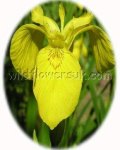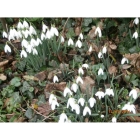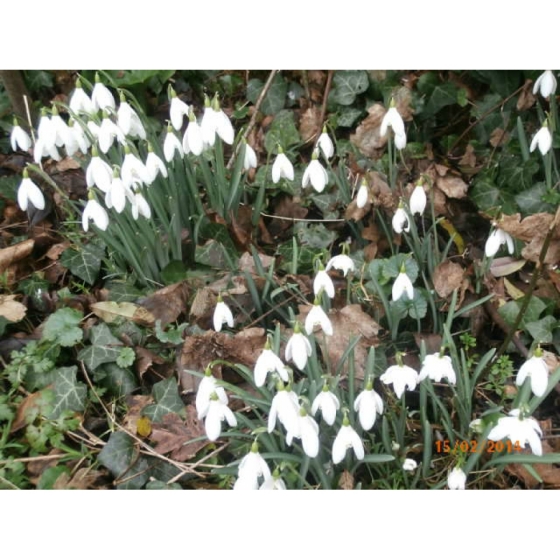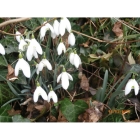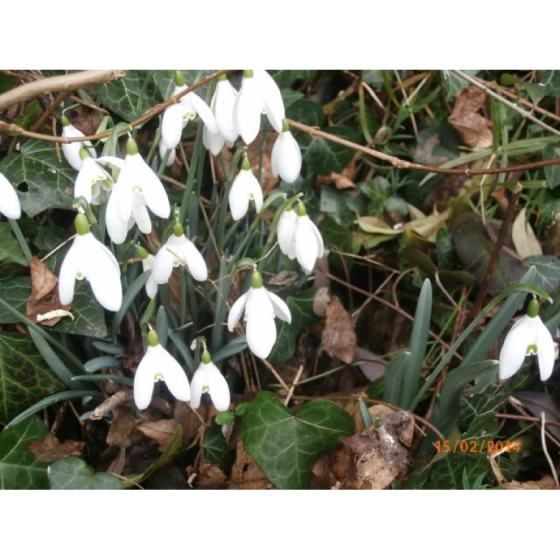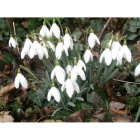 | ||
Snowdrop- Galanthus nivalis is a familiar woodland Wildflower that heralds the end of winter and is a sure sign that spring is not far away. There is little to rival the sight of new snowdrops emerging through freshly melting snow and the nodding bell shaped flowers normally appear in February turning woodland floors and hedgerows a brilliant snow white. Snowdrops are a favourite in gardens where they have been grown for many years. Although there are many cultivated varieties available, the British species Galanthis nivalis can work just as well giving a more natural effect. Snowdrop flowers are scented and will attract insects including bees. By May the leaves will have died back, and the seedpods ripened. Snowdrops grow best on moist soils that are rich in leaf mould and will tolerate some sun but generally prefer deep or semi- shade where the flowers will appear much more striking. It is possible to introduce and establish Snowdrops in short grass. Snowdrops look best growing alongside other early flowering species such as Primroses and Winter aconites How to grow Snowdrops from Bulbs: Snowdrop bulbs can be introduced to their permanent planting positions in October and November. If the weather prevents planting, then bulbs should be stored in a dry, cool shady place until things improve. Stored carefully in this way most snowdrop bulbs should keep for at least a week or more however bulbs should not be allowed to dry out. A hole approximately 3 times the length of the bulb is required when planting. If the soil is especially heavy then the addition of a little sand can help. Snowdrop bulbs will establish more readily if a damp soil with some leaf mould can be found in a shady position. Snowdrops look best planted in clumps typically of 20-100 bulbs and can be divided in later years. Our Snowdrop bulbs are supplied freshly lifted to give good results. Flowers should normally appear the following spring. Snowdrops can also be established by planting “in the green” in spring. Please click here to discover more details. Summary: type - Flowering Bulb/rhizome, colour - White or Cream, height - 0 to 25cms, flowers February, March, habitat - Deep Shade (Dense Woodland) Also available in the green in March. | ||
Printed 27/12/2025 21:16:48
nb2_1 white nodding flowers from feb march plant in a dry or damp shady area as part of a woodland or spring meadow setting snowdrops look best planted in clumps typically of 20 100 bulbs and can be divided in later years bulbs will be supplied freshly lifted to give good results as in the green type flowering bulb rhizome colour white or cream height 0 to 25cms flowers february march habitat deep shade dense woodland also available in the green in march
